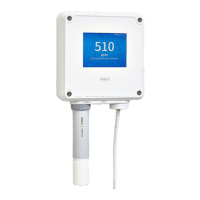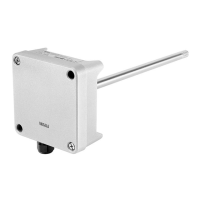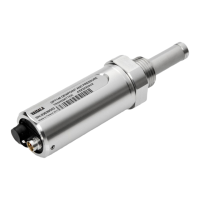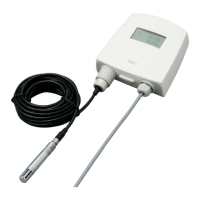Table 11 Relay wiring: Normally open (NO)
Relay activation mode Measurement above/below
limit
Relay opened/closed
Relay active above limit Above = Relay active Closed
Below = Relay inactive Open
Relay active below limit Above = Relay inactive Open
Below = Relay active Closed
Table 12 Relay wiring: Normally closed (NC)
Relay activation mode Measurement above/below
limit
Relay opened/closed
Relay active above limit Above = Relay active Open
Below = Relay inactive Closed
Relay active below limit Above = Relay inactive Closed
Below = Relay active Open
6.5.3 Relay hysteresis
If the measurement you are using to control the relay is likely to move back and forth close to
the activation setpoint, you can set a hysteresis that prevents the relay switching on and o
too frequently.
When hysteresis is used, the relay activates at the defined limit, but does not switch o
immediately when the measurement moves back to the other side of the activation limit.
Instead, with hysteresis, the relay remains active until the measurement crosses the relay
activation/deactivation limit and the additional buer value.
Figure 35 Behavior of relay that activates
above limit, with hysteresis
1 Measurement goes above the relay
activation limit (solid line —) and the
relay activates.
2 Measurement falls below the activation
limit, but stays above the hysteresis
limit (dashed line - - -). The relay
remains active.
3 Measurement falls below the hysteresis
limit and the relay switches o.
Indigo510, Indigo520 User Guide M212287EN-N
82

